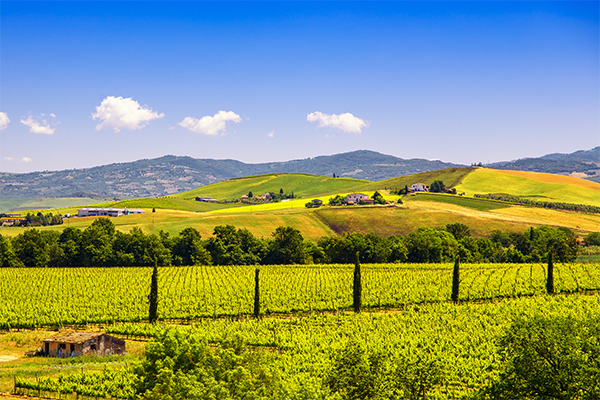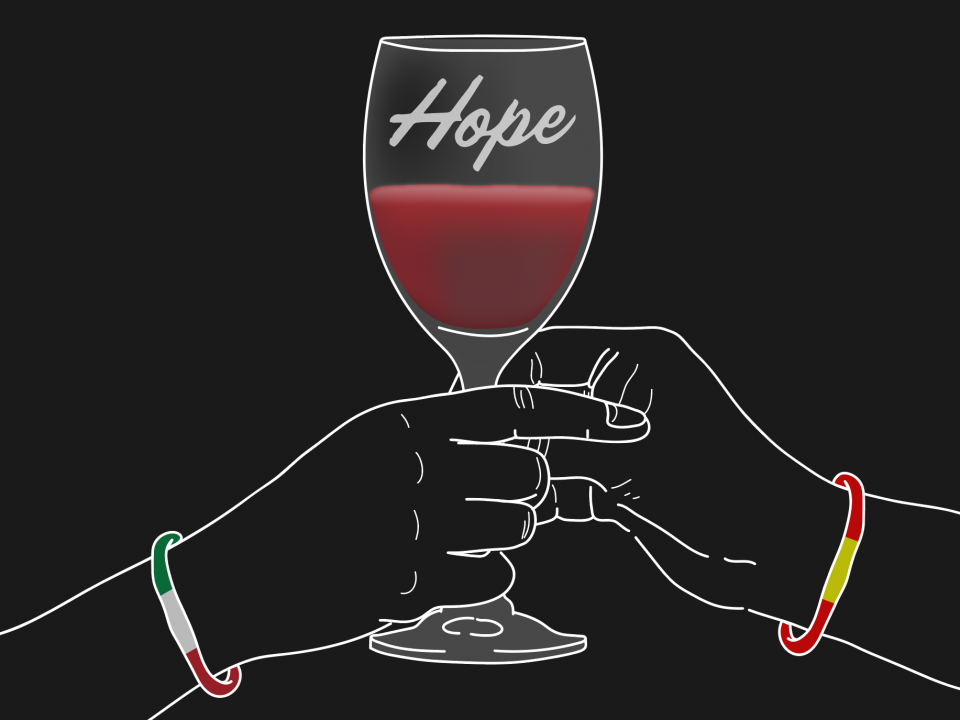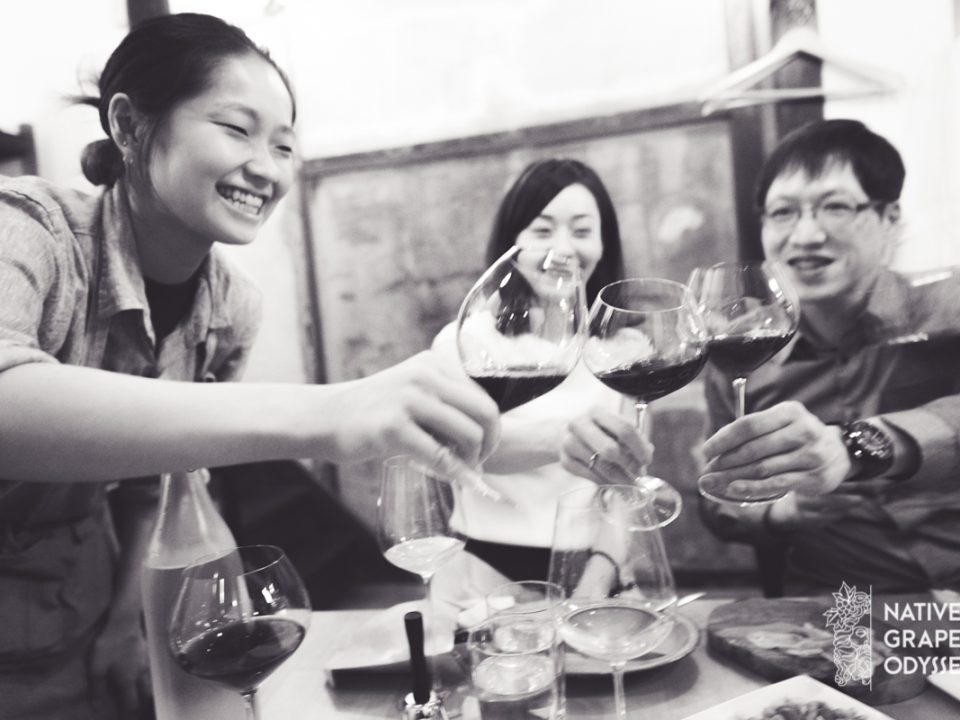
Every end is a new beginning – the Native Grapes Academy project in 2020
February 3, 2020
Spanish wine producers and Spanish designations of origin: a love story from “I” to…”DO”
March 23, 2020A whale, a family, and an unexpected piece of paradise
INTRODUCTION
Region: Tuscany
Grapes: Sangiovese Grosso
Nose: violets, cherries, red forest fruit, balsamic notes, oregano juniper, thyme
Palate: warm, robust, fleshy
Aging: 5 years of which at least two years of aging is done in oak barrels / “Reserva” is aged for 6 years of which at least two years is always done in oak barrels
Drink within: 5/8 years
Pairs with: roast and game dishes
THE LAND
“Ah, that’s right, Brunella…”
What lies beneath Montalcino, the pretty Tuscan corner, where the myth surrounding Sangiovese was likely conceived? Under the castle, under the wine shops and bars that seem to interlace each other on tiny streets, under the international atmosphere of this Italian village, under the fortress, under everything, there is the land. Inside the ground, we find what Brunello needs to maintain its identity. Both those who don’t know anything about it, as well as seasoned experts will admit: for wine, the soil is absolutely vital.
The hills of Brunello di Montalcino are in fact rich in calcareous sediments, clayey schist, sandstone and gravel, which, along with its microclimatic variations, manifest in the wine, giving the Brunello produced from these soils the ability to showcase its fine nuances. The soil is said to be “of marine origin”, but this statement became particularly apt in 2007 when during field survey work prior to excavation for the establishment of a new vineyard in Poggio alle Mura (Montalcino, Siena); fossils belonging to a whale were found, she was later baptized Brunella. If they had to choose a name for each species of marine origin found down there, it would have taken quite a while… among the discoveries there were molluscs, sharks teeth, crustaceans and shells, there were at least 30 species presented. This area was an ocean bed: the remains of three consecutive geological eras, which gave rise to the land we covet today. (Native Grape Odyssey, Book 1, p. 239)
It is this soil, in collaboration with the Mediterranean climate of this region that develops the distinct flavours found in the wine; notes such as cherry, violet, blackberry, raspberry and spices come to life in the glass.
THE FAMILY
“Other things may change us, but we start and end with the family.”
Aside from the qualities of the soil, this famous vine also had the good fortune of being admired by the discerning eyes and good taste of the Santi family. It all began when Clemente Santi, a former pharmacist, who lived in the early 1800s, intuitively experimented by using only Sangiovese grapes for the production of Brunello, a revolutionary idea at the time and one that would prove to be a major contribution for future generations.
Once on center stage, Brunello became an instant success, winning medals and prompting other producers to create imitations by popular demand. Bottles were left to age for 32 years and then offered up once again for careful scrutiny (the oldest bottle dates back to 1843). It remained a protagonist and continued to rise in the market, until the mid-thirties, when phylloxera threatened Italian viticulture and threw vineyards into crisis.
However, due to the recognition of the DOC system in 1966, and the birth of the “Consorzio del Brunello di Montalcino” the following year, this vine and wine recovered and thrived back into the spotlight. It was the arrival of the Mariani family that helped to reinvigorate the Montalcino, thereafter, this wine began to be exported, soon arriving on the tables of American restaurants. Brunello has crossed almost every border, reaching new heights of fame as the years went by, this also meant that more investments were made in wines created purely with the Sangiovese grape variety.
THE PARADISE
“Yes, this is the poetry of the Earth.”
In 1980, due to the notoriety of this wine and its terroir, the denomination “Brunello di Montalcino DOCG” was born. To maintain its qualification for this classification, this wine can only be produced in the province of Siena, in the municipality of Montalcino, and can only be made exclusively with Sangiovese grapes. It must then be aged for a minimum of three years, five if it is a “Riserva” bottle (in large casks, barriques or oak casks), from January 1st until the fifth year after the harvest.
Brunello earned this appellation almost 100 years after the two most significant moments in its existence, namely, when two Brunello’s, one bottled in 1888 and the other in 1891 were elected as the two most important Brunello vintages. These two exceptional examples definitively cemented Brunello as one of the greatest wines to come out of Europe, along with Barolo, a wine that enjoys phenomenal widespread visibility.
However, paradise also holds a harsh reality; based on some news released by ISMEA, the national public body in charge of monitoring the Italian wine and food market; according to data, Brunello remains the most expensive wine on the market (1.085 euros per hectoliter), followed by its not so distant neighbours Amarone and Barolo. In the town of Montalcino, one hectare of Brunello corresponds to a market value of 900,000 euros.
The year 2020 will probably be “the year of Montalcino”: many Tuscan wineries and estates will be at the center of several mergers & acquisitions, more than in previous years. The aim has become cooperation -enabling connection and coordination among producers- to improve production, tackling the market together.
Finally, 19 years have passed since 2001, this means that the Brunello di Montalcino bottled in that year will not only be mature, but at the highest point of its evolution. I mean, what could be better? Powerful, balanced and unique. Nothing could be more elegant, so much so that this vintage never remained on the sidelines, even after all these years, but instead, it was much anticipated and has been well received. Brunello turned heads in the land of the Rising Sun during the “Benvenuto Brunello Japan” -an event that was held both in Tokyo and Osaka- supported by 20 deserving Tuscan winery stands and promoted directly by the Consorzio del Vino Brunello di Montalcino.
But if you think it was the only one you’re wrong… are you at least a little curious to know what other European wines have conquered the pallets and hearts of Japanese consumers? If the answer is between “but of course, come on” and “OMG, WHAT?!” keep following our blog and you’ll know more soon!




